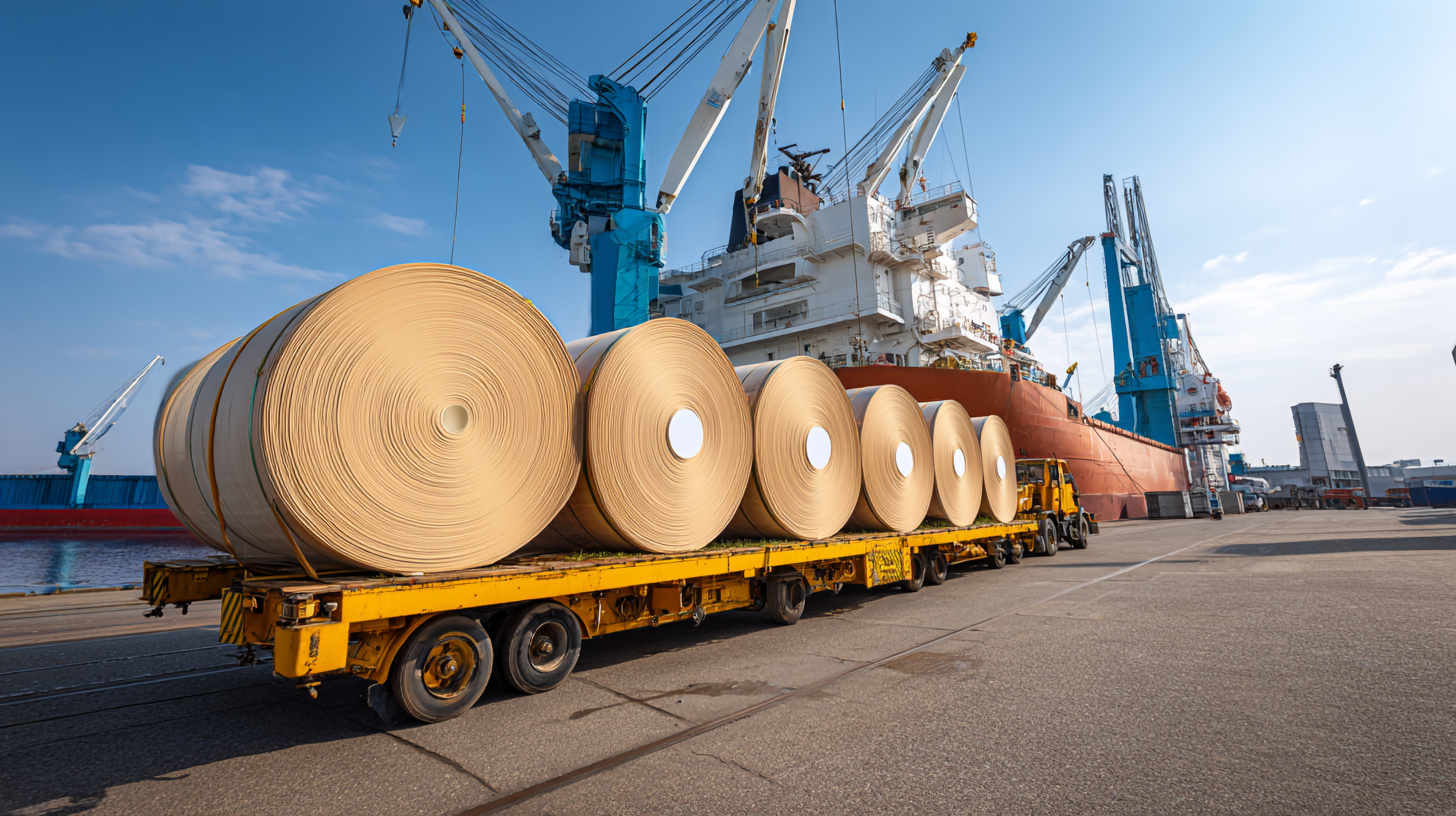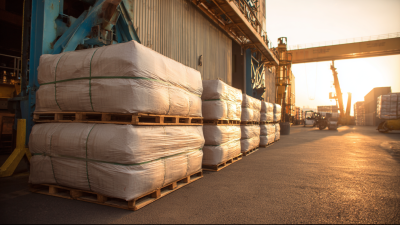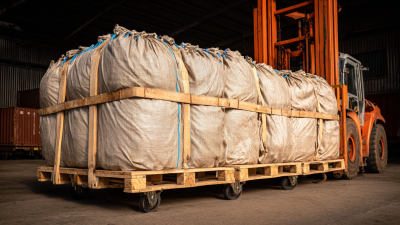
In the rapidly evolving landscape of logistics and supply chain management, the significance of effective packaging solutions cannot be overstated. Among these, Paper Dunnage Air Bags have emerged as a vital component for ensuring the integrity of goods during transit. According to a recent industry report by Smithers Pira, the global market for dunnage air bags is expected to grow by 6.5% annually, highlighting their increasing adoption among shippers seeking to reduce damage costs and enhance sustainability. These air bags not only provide cushioning to prevent movement and shifting of cargo but also align with the growing demand for eco-friendly packaging solutions, with paper materials being biodegradable and recyclable.

As shippers face rising logistical challenges, understanding and implementing Paper Dunnage Air Bags can lead to improved operational efficiency and cost savings, making them an indispensable element in modern shipping solutions.
Paper dunnage air bags play a crucial role in safeguarding cargo during transport. These innovative packaging solutions are designed to fill voids in shipping containers or trucks, preventing movement that can lead to damage. By providing a cushion of air, paper dunnage bags protect various types of cargo—from fragile items to heavy machinery—ensuring that they arrive at their destination intact. Their lightweight nature also contributes to overall efficiency in shipping, making them an ideal choice for modern logistics.
In addition to their protective capabilities, paper dunnage air bags are environmentally friendly, making them a sustainable option for businesses looking to reduce their carbon footprint. Made from recyclable materials, these bags can be easily disposed of or repurposed after use, aligning with the growing trend toward sustainable shipping practices. As industries continue to prioritize eco-conscious solutions, paper dunnage air bags are becoming increasingly significant in the broader context of cargo protection and environmental responsibility in transportation logistics.
| Dimension | Importance | Application | Material Type |
|---|---|---|---|
| Weight Distribution | Ensures even weight across the cargo | Container Shipping | Recycled Paper |
| Shock Absorption | Protects cargo from impacts and vibrations | Truck Transport | Kraft Paper |
| Moisture Resistance | Prevents moisture damage during transit | Air Freight | Coated Paper |
| Customization | Tailored sizes for specific cargo needs | Export Packaging | Multi-layer Paper |
| Eco-Friendliness | Environmentally sustainable packaging solution | Retail Shipping | Biodegradable Paper |
When it comes to selecting the appropriate paper dunnage air bags for various shipping needs, it's essential to consider several key factors. First, the weight and type of cargo being transported play a crucial role in determining the size and strength of the air bags required. Lighter items may need smaller, less rugged bags, while heavier or more delicate goods necessitate more robust cushioning to prevent damage during transit.
Additionally, the mode of transportation—whether by land, sea, or air—can influence the choice of dunnage air bags. For instance, if goods are shipped via ocean freight, which exposes them to varying pressure levels and humidity, moisture-resistant air bags would be ideal. Furthermore, understanding the constraints and requirements of the shipping route helps in choosing bags that will adequately stabilize and protect the cargo. Ultimately, careful consideration of these factors leads to safer shipping practices and minimizes the risk of damage.

Proper installation of paper dunnage air bags is essential for ensuring cargo safety during transit. According to a report from the International Council on Transportation and Logistics, improper load securing leads to an estimated 25% of cargo damage incidents. To reliably protect shipments, it is critical to select the right size of bags based on the container's dimensions and the weight of the load. Air bags should fill all voids in the container to minimize movement, enhancing stability and preventing shifts that can lead to damage.
When installing these air bags, best practices include placing them at strategic points throughout the container. For optimal performance, position the bags tightly against the cargo and the container walls. Inflate them slowly to avoid excessive pressure, which can result in rupturing. A study by the Container Safety Institute found that following these guidelines not only reduces damage rates by up to 50% but also improves overall shipping efficiency. Maintaining proper installation techniques is vital for carriers and shippers aiming to protect their investments and sustain operational effectiveness.
In the evolving landscape of packaging solutions, paper dunnage air bags emerge as a significant alternative to traditional plastic materials. With recent shifts in packaging practices, such as the substantial reduction of plastic air pillows in delivery systems, the advantages of paper dunnage air bags become increasingly evident. These bags not only contribute to sustainability efforts by being recyclable, but they also offer effective protection against damage during transport. The design innovations in dunnage air bags allow for precise air pressure control, which enhances the stability of cargo in transit, thereby reducing damage rates significantly.
The comparison of paper dunnage air bags with other packaging solutions highlights their critical role in modern shipping. Unlike conventional padded bags containing plastics, which pose recycling challenges, paper alternatives align with the growing demand for environmentally friendly materials. The shift toward paper solutions reflects a broader industry trend aimed at minimizing plastic usage. As businesses seek recycling-friendly options, paper dunnage air bags stand out for their dual benefits: promoting sustainability while providing reliable protection for goods during shipping. This transition signals an important step toward a more responsible approach to packaging in the supply chain.
In today's shipping industry, sustainability is at the forefront of operational strategies, and paper dunnage air bags are increasingly recognized for their eco-friendly benefits. Made from renewable resources, these bags provide a green alternative to traditional plastic materials. Unlike plastic dunnage, which contributes to environmental pollution and takes centuries to decompose, paper dunnage is biodegradable and recyclable, significantly reducing waste from shipping operations. This shift not only aligns with global efforts to promote sustainability but also appeals to environmentally conscious consumers who prefer companies that prioritize ecological responsibility.

Furthermore, using paper dunnage air bags can enhance overall supply chain efficiency. Their lightweight nature minimizes extra shipping weight, leading to lower fuel consumption and reduced carbon emissions during transportation. By optimizing cargo space and securing products during transit, these bags ensure reduced product damage and waste, contributing to cost savings in the long run. As businesses navigate the challenges of modern shipping, integrating sustainable practices through the use of paper dunnage air bags represents a strategic move towards a more eco-conscious and economically beneficial future.












